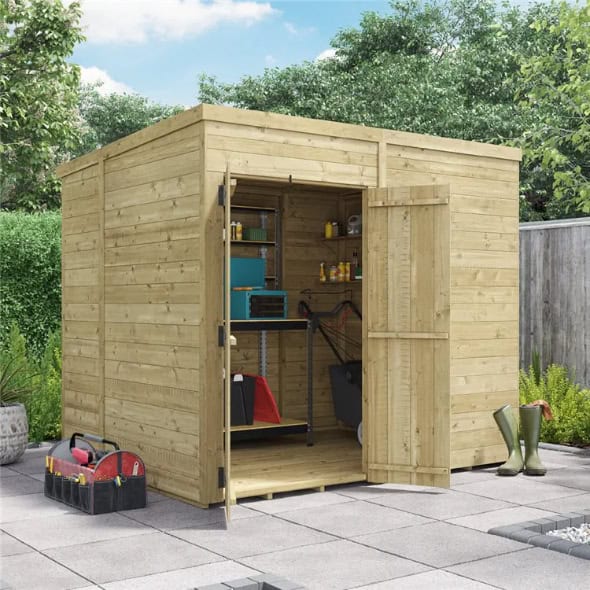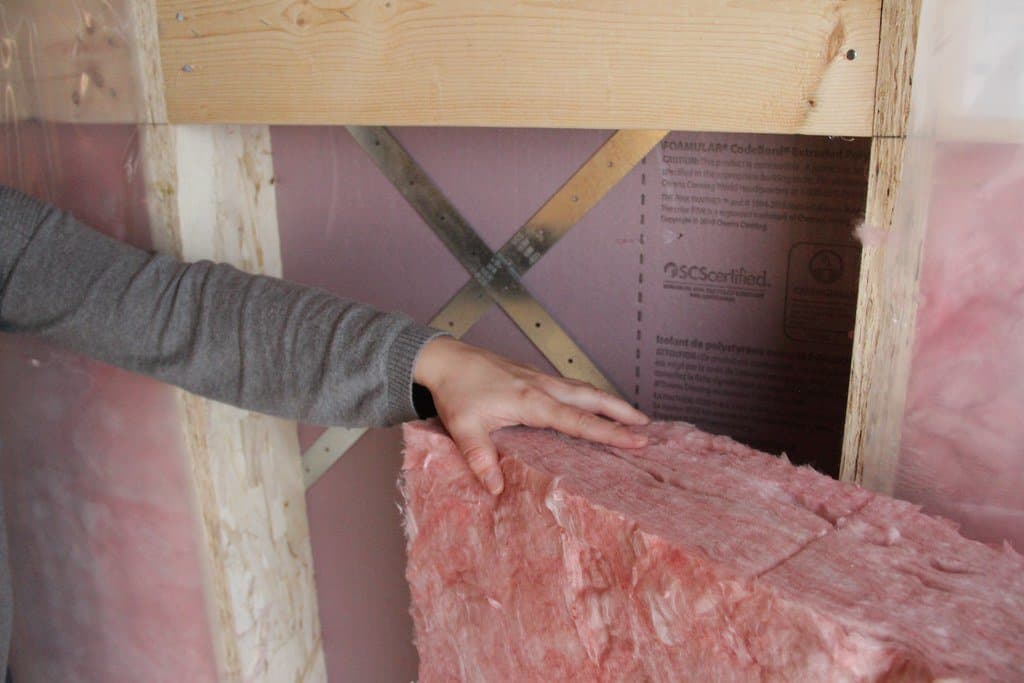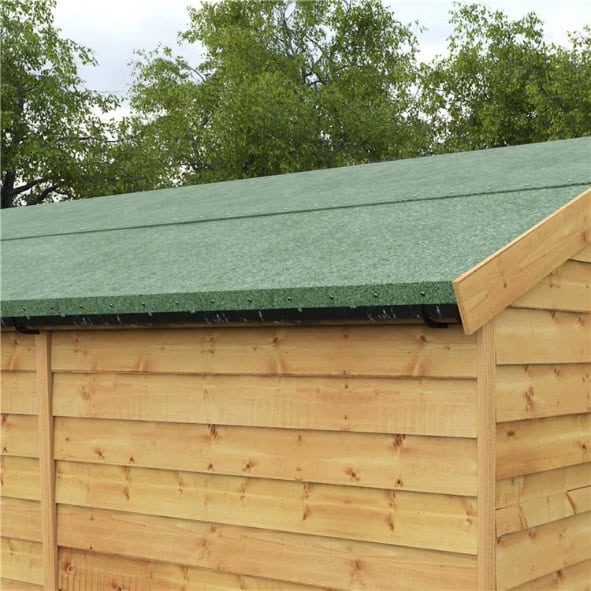Jump to:
Winter is that time of year when your garden storage is at greater risk, especially if left unprepared for harsh weather and cold temperatures. Whatever is stored inside could also take a knock. It can be pretty frustrating when you’re cooped up indoors and unable to do anything. Let’s make sure that doesn’t happen, alright?
Take these steps before winter to ensure your shed and its content survive the season, even before it sets in.
Give Your Garden Storage a Weatherproof Coating

Cold and wet weather can do a number on untreated wooden outdoor storage. Once the surface is in contact with dampness, the material will rot—mould, fungi, and even insects will be all over it. The solution is to treat it with wood treatment in advance, ideally in early autumn, so it has time to set before winter.
If you haven’t treated your garden storage in a while, now’s a good time to re-coat it. Consider pressure, dip, or spray treatments for the best protection.
Pressure treatment is the better option, but it’s a bit more complicated. Fortunately, most companies and retailers offer it as standard at the point of purchase, with their experts handling the process. If you’re replacing your shed, it’s definitely worth taking advantage of. Our range of pressure treated sheds offers plenty of great choices.
Dip treatment and spray treatment are less time-consuming processes and are usually the default at the point of sale. However, you will need to paint your wood with fresh treatment, and the beginning of autumn is the best time to do this.
Tip: make sure your wooden building is not too close to a wall, fence or a tree. Not only do you need space to get around to treat it, but it is much harder for the building to dry off when it is up close to other objects.
Ultimately, a good treatment gives you peace of mind and keeps your wood shed and stored items in shape. To learn how pressure treatment works, read this guide: Pressure Treated vs Dip Treated Wooden Buildings
Keep Your Garden Storage Insulated

Insulation is a great way to keep moisture out of your shed. It helps regulate the temperature inside, reducing the potential for condensation that can lead to mould or rust on your tools and gear. In a nutshell, it keeps everything drier while making your shed last longer.
There are plenty of insulation options out there, like spray foam, fibreglass, and foam board. Spray foam is great for sealing up small cracks and stopping draughts. Fibreglass is affordable, easy to use, and even helps with soundproofing. Foam board is lightweight and provides decent thermal insulation.
For in-depth instructions, refer to our guide, ‘How to Insulate a Garden Shed’
Give Your Roof a Quick Maintenance Check

Make sure your roof is free from cracks, missing shingles, or worn-out felt to keep your garden storage winterproof. Otherwise, you risk leaks, which can lead to dampness and damage over time. Here are some easy tips for checking up on your roof:
- Get your ladder: Use a strong, working ladder to access your shed roof.
- Look for damage: Check for loose tiles, rust spots, or signs of sagging. If you find any loose tiles, reattach them immediately. Use a wire brush for rust spots, then apply a rust-inhibiting primer to stop it from returning.
- Clear the gutters: Clear away leaves and debris to prevent blockages leading to water buildup.
- Check for leaks: Look inside your shed for damp patches on the ceiling. The discolouration is a sign of leaking. Catch these problems early to prevent further damage to your shed storage.
- Trim branches: Cut back any overhanging branches that could fall on the roof. Wear your safety gear when you’re using tools. If a branch looks too high or tricky, it’s best to get a professional to handle it!
- Clean the roof: Use a stiff brush to remove moss or lichen. And if it’s stubborn, you might want to try a moss killer or a mixture of water and vinegar to help loosen it up before scrubbing.
- Seal gaps: Use roofing sealant to fill any small cracks or holes. It’s best to apply it on a dry day to ensure a good seal and to smooth it out with a putty knife for an even finish.
That’s it! Weatherproofing, insulation, and regular checks can help keep your garden storage in good shape against the harsh winter. Feel free to make adjustments that work for you. And for help choosing your next garden storage solution, check, out our garden storage buying guide.
Up next on your reading list: How to Make Your Log Cabin Winter-Ready





